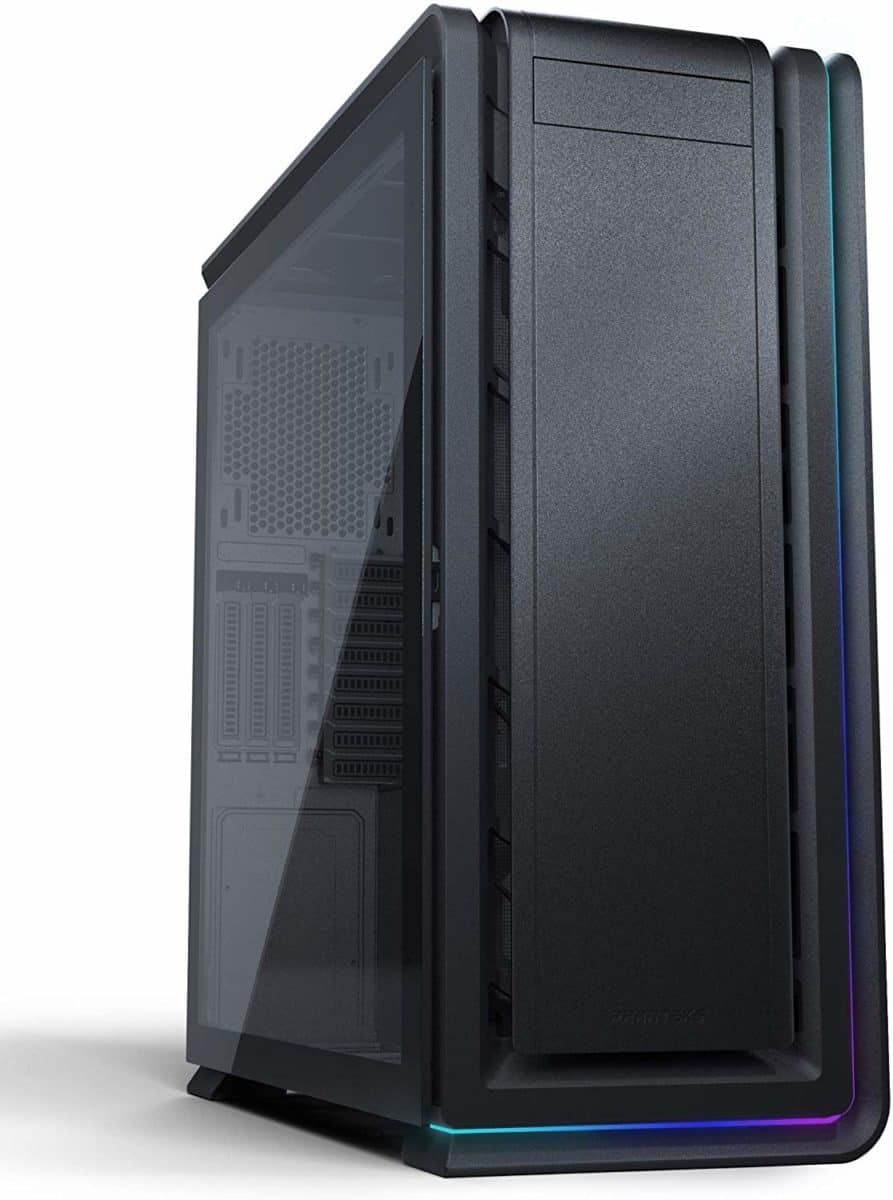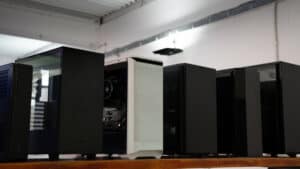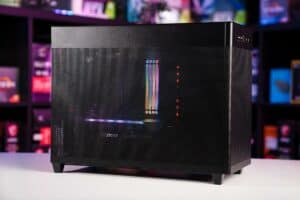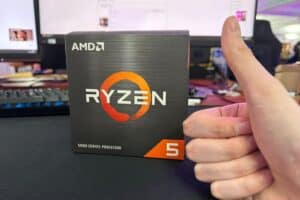Best PC case 2024 – our top 8 picks for your next build
Pick yourself up one of the best chassis' in the game
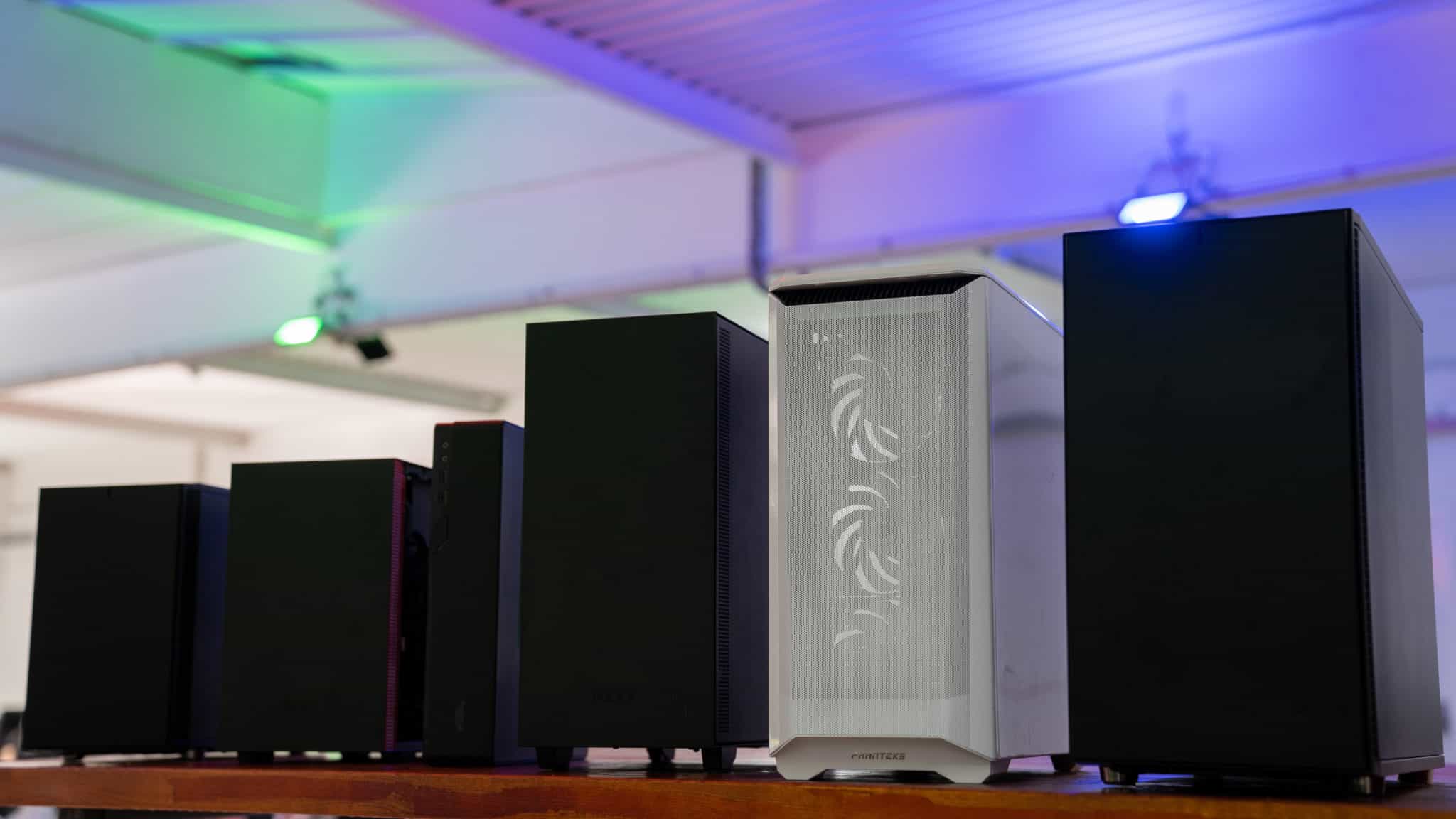
WePC is reader-supported. When you buy through links on our site, we may earn an affiliate commission. Prices subject to change. Learn more
When it comes to finding the best PC case for your next build, there are a few key areas that everyone needs to keep in mind. Ensuring your components have sufficient airflow is the most important, something that many of the recommendations here take care of. Trickier areas to tackle, such as aesthetically pleasing design and acoustic performance, are not so easily handled without additional costs. Still, quality cases tend to offer a balance of all three. If you’re looking to accommodate for a new GPU, something like our best PC case for RTX 4080 Super page is for you!
When building a new gaming PC you want to ensure everything gets wrapped up by a high-quality case from reputable manufacturers. No matter your budget it is possible to get quality, regardless if you are going for a full-tower, Mini-ITX, or a case constructed entirely of tempered glass. Our recommendations have spacious interiors and promote excellent airflow, giving you everything needed to maximize performance. In our top selection, you will find the Hyte Y60, Fractal Design Torrent, and Phanteks Enthoo 719, while we update this page regularly to ensure the best additions and choices of cases for you.
Today’s best PC case deals
- NZXT H9 Flow Dual-Chamber ATX Mid-Tower PC Gaming Case – Save 21% NOW!
- Corsair 3000D RGB Airflow – Save 30%
- MSI MAG Forge 112R – Save 22%
- Corsair 5000D Airflow – Save 29%
- CORSAIR 3500X ARGB Mid-Tower – Save 18%
- be quiet! Light Base 600 LX – Save 20%
- Lian Li V3000 Plus White GGF Edition Full Tower case – Save 55% NOW!
- be quiet! Dark Base PRO 901 Black computer case – Save 12% NOW!
- Corsair 5000D – Save 17% NOW!
- Thermaltake Core P3 Pro E-ATX Tempered Glass Mid Tower – Save 27% NOW!
Best PC case
Below we go in greater detail for our top picks and more! Comparing specifications, pros, cons, and looking back to how well we reviewed them during testing.
Hyte Y60
Hyte Y60
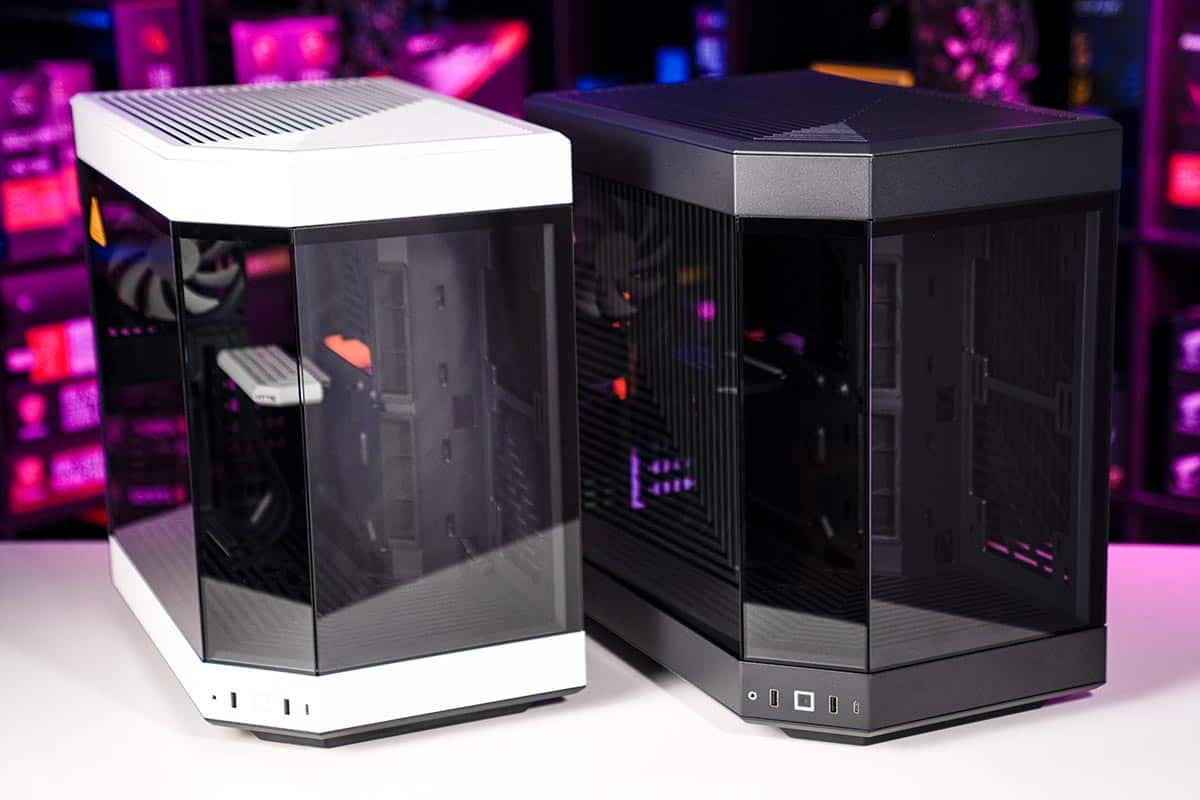
Type
Mid-Tower
Motherboard Support
EATX, ATX, mATX, ITX
Dimensions
456mm x 285mm x 462mm (LxWxH)
Included Fans
3x Flow FE12 120mm
- Incredible value
- Great thermal and acoustic performance
- Clean, modern design
- Water-cooling support
- Cable management brackets
- Well constructed
- Limited front I/O ports
- Vertical GPU only
Overall, the Hyte Y60 is magnificent. There’s a uniquely modern twist on the very boring rectangular design we see most of the time. This chassis has massive potential to be a modding favorite in the community.
The Hyte Y60 is easy to work with, with so much space even intricate water loops are a doddle. Along with a well-thought-out design, the Y60 features a panoramic view inside, a PCIe 4 riser cable for vertical GPU mounts, and three 120mm fans. Overall the case is well-built, aesthetically pleasing, and well-thought-out, and if you would like to read more, check out our full Hyte Y60 review here.
Fractal Design Torrent
Fractal Design Torrent
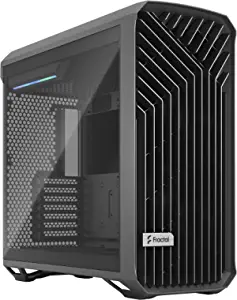
Size
ATX Mid-tower
Total fan mounts
7x 120/140 mm or 4x 180 mm
Case dimensions (LxWxH)
544 x 242 x 530 mm
Net weight
11.1 kg
Motherboard compatibility
E-ATX / ATX / mATX / ITX / SSI-EEB / SSI-CEB
Dust filters
Front, Bottom
- Great airflow
- Exceptional build quality
- RGB model available
- PSU position
Fractal Design is known for high-quality cases and the Torrent was yet another resounding success. The massive open grille front panel features two pre-installed 180mm fans, sucking in vast amounts of cool air. the overall design is fairly unique, featuring a new layout with expansive base intakes (3 x 140mm fans). When the front and bottom fans combine, it delivers all-around great performance while looking stylish in the process.
Most common motherboard form factors are compatible with the Torrent, however, we would still advise you to stick to ATX when building inside. General clearance is solid and there are a lot of cooling support options. Aside from that, you get a sleek tempered glass side panel and dust filters, making it look clean like a dream. For a more in-depth look, you can see how the Fractal Torrent performed in our review here.
Phanteks Enthoo 719
Phanteks Enthoo 719
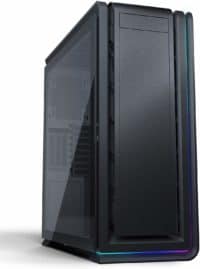
Motherboard Support
E-ATX, ATX, Micro-ATX, Mini-ITX, SSI-EEB
Dimensions HXWXD
595 x 570 x 240 mm
Drive Bays
21
Included Supported Case Fans
N/A
- Impressive build quality
- Dual system support
- Plenty cable management room
- Great value
- Attractive design
- Could be too tall for some desks
Phanteks takes build quality and useful features as seriously as anyone else, all while offering superb PC cases at affordable prices. The brand has cases to suit all budgets and needs and the Enthoo 719 sits as one of the best full-tower cases you can get. Not only is this tower huge, but it’s also built to last and looks incredibly premium. Furthermore, the price to performance with this chassis is nearly unbeatable.
This PC case supports motherboards from EEB all the way down to Mini-ITX and can even support a dual-system setup. That’s right, if you are a streamer/ content creator you can get everything you need and fit it inside this one full tower.
Some may consider this to be a “budget” full-tower but don’t let that fool you, this is one classy chassis. Any type of build looks amazing behind the huge uninterrupted tempered glass panel. Water cooling isn’t a must but the main features go a long way to support a custom loop setup. Furthermore, there is a vast amount of drive options at hand here, with 11 places to mount a 2.5″ SSD and 12 spots for a 3.5″ drive.
As there are plenty of radiator and fan support options, the Phanteks Enthoo 719 comes with a fan hub. A simple feature to include but it is much appreciated when you need to tidy up the cables in this build. Looks great and performs even better, a superb full-tower PC case.
Check out our full review of the Phanteks Enthoo 719 here.
ASUS Prime AP201
ASUS Prime AP201
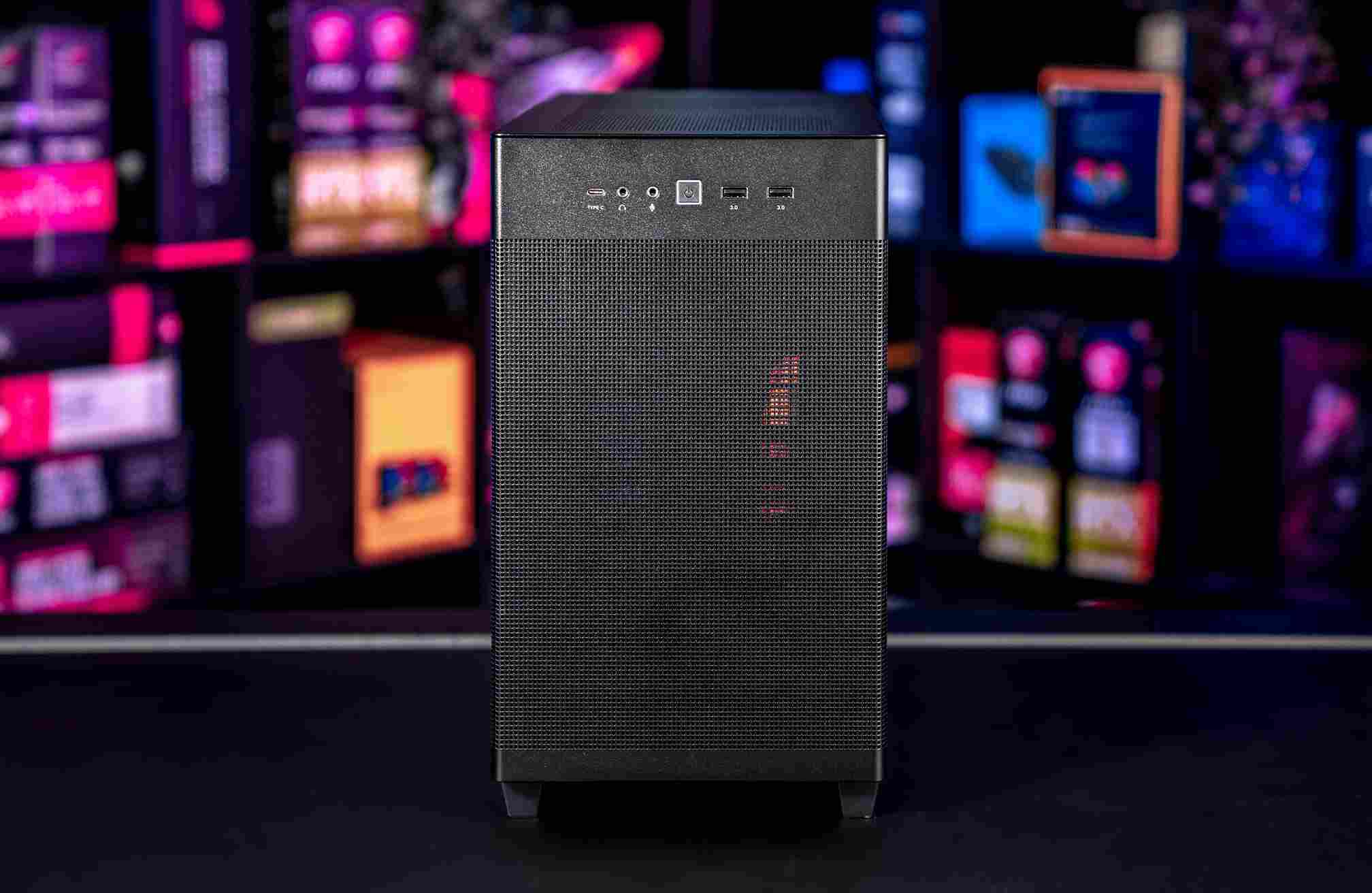
Type
Small tower
Motherboard Support
Micro-ATX, Mini-ITX
Dimensions
460 x 205 x 350 mm (LxWxH)
Included Fans
1x Prime 120mm
- Mesh Mesh Mesh (nice airflow)
- Sleek
- Surprising amount of room
- Not the best for RGB components
Good quality SFF PC cases are hard to come by, however, ASUS entered the Prime AP201 into the market and it’s actually pretty good. Mini-ITX lovers will find this to be a little on the large size, with a 33-liter volume, however, it looks and feels pretty compact, with four Quasi-filter mesh panels.
The AP201 has support for a 360mm radiator, or five fans, and comes with tool-free side panels for easy access. The case has a 120mm fan pre-installed but you are going to want to add to this for better thermals. The case is compact, sleek, and kind of stealthy, with room for a graphics card up to 338mm in length.
This may not offer the same compact size as cases such as the Thermaltake Core V1 or Fractal Design Node 202 PC cases but its unique size in this bracket means you can get some impressive builds in here. Take a look at our ASUS Prime AP201 review here for more information.
Fractal Design Define 7
Fractal Design Define 7
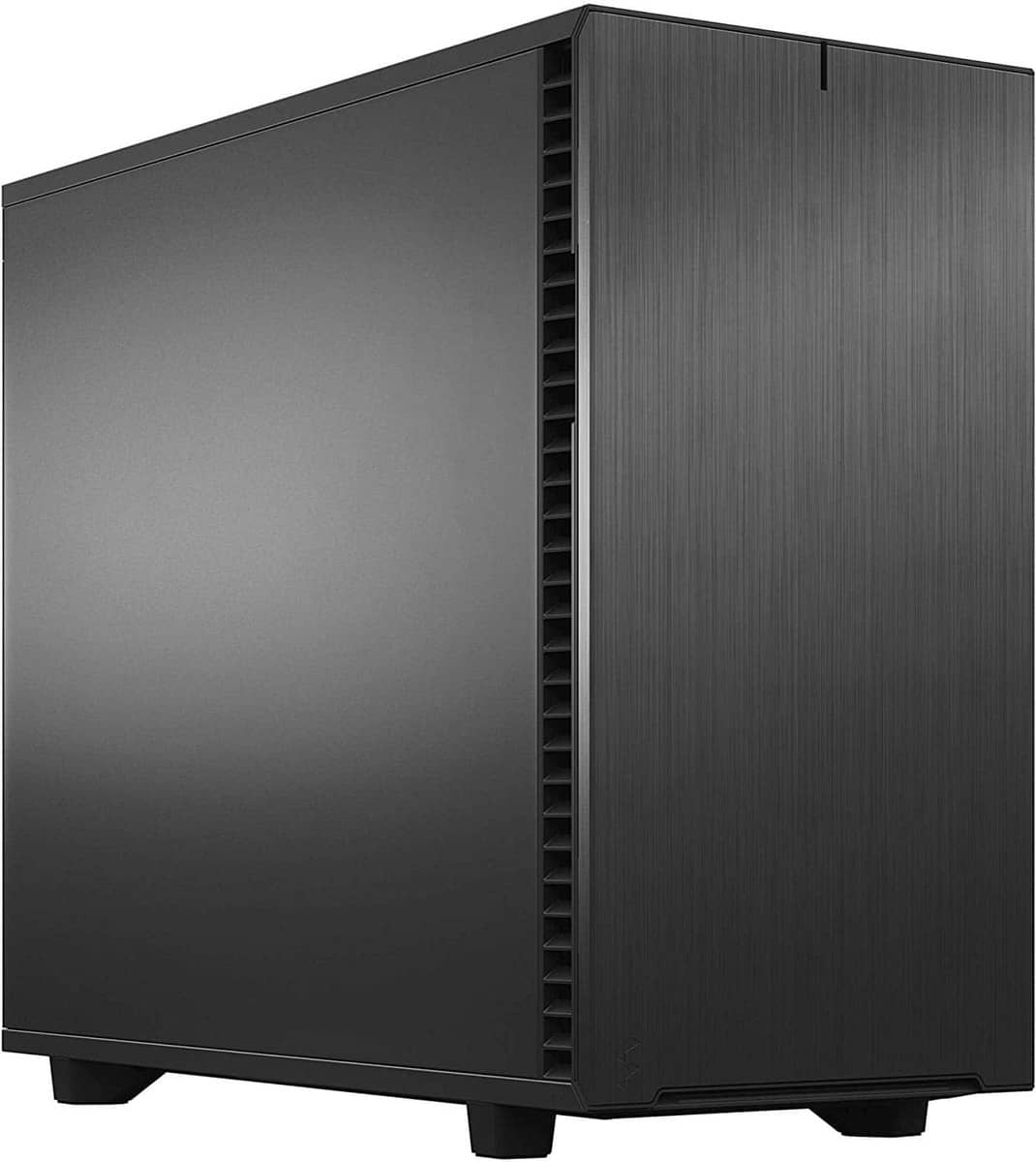
Type
Mid-tower
Motherboard Support
E-ATX, ATX, mATX, Mini-ITX
Dimensions HXWXD
547 x 240 x 475mm
Included Fans
3 x Dynamic X2 GP-14 140mm
- Great acoustic performance
- Packed with cooling options
- Easy cable management
- Quality materials used
- Modular top panel
- Retains optical bay
- Excellent build quality
- Sound dampening door bad for thermal performance
- Similar performance to previous model
Fractal Design has released some unbelievably good PC cases over the years and this latest refresh follows that trend. The Define 7 is essentially the latest update on the brilliant R6, aimed towards those who love silent operation. The interior, color options, and tempered glass options all remain the same, with a few tweaks that make this one of the best silent PC cases I have seen in recent years.
You can’t hide from Fractal’s build quality, it hits you in the face straight away. Furthermore, the brand constantly adds useful features whenever they spot a gap for one, and while you may not always need it, it’s great to have these extra options.
We see a lightly tinted glass back on these and the interior now sports a gorgeous white coat on the tempered glass models. Of course, if you go for the non-TG version the inside remains that gun-metal grey color. This case supports all the way up to E-ATX but you will lose the use of the cutouts. For optimal use go for ATX form factor when building in this case.
Sound performance is very close to its predecessor, with the added quality-of-life improvements making all the difference. The cooling performance takes a hit with the case door at the front but you are most likely grabbing one of these to cut down on system noise. The front, sides, and top all feature heavy-duty sound-dampening materials to give you excellent acoustic performance.
This well-constructed case comes with a modular layout, plenty of cooling support, water-cooling support, and drive options. A truly amazing case and one of the best for silent operation.
Check out our full Fractal Design Define 7 review here.
Corsair iCUE 5000X
Corsair iCUE 5000X RGB

Type
Mid-tower
Motherboard Support
ATX, mATX, Mini-ITX
Dimensions
520mm x 245mm x 520mm
Included Fans
3 x 120mm RGB
- Visually stunning
- Performs well
- High quality
- Airflow model performs better
Corsair’s 5000-series still goes down as one of the best as far as PC cases go. While the iCUE 5000D Airflow model offers better performance, for water cooling, it has to be the slightly more extravagant 5000X. The iCUE 5000X is marvelous and will make any system build look spectacular. Of course, there are many PC cases in this round-up that you could build an impressive loop inside, however, we had to shout out the 5000X.
This case is premium, so as you would expect, we have a bunch of premium features to match. Aside from four sides of tempered glass, the interior is spacious, modular, and can support massive amounts of cooling options. We love this case so if you would like to read more, check out our full review of the 5000X and 5000D Airflow here.
Phanteks P400
Phanteks Eclipse P400
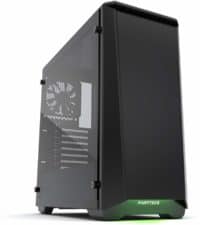
Type
Mid-tower
Motherboard Support
E-ATX, ATX, mATX, Mini-ITX
Dimensions HXWXD
460 x 210 x 470mm
Included Fans
2 x 120mm
- Excellent value
- Design is superb
- High build quality
- Tempered glass
- Great thermal performance
- Limited water-cooling potential
- Radiator at the front limits storage
The Phanteks Eclipse P400 offers PC builders a more affordable option without compromising on build quality or performance. Phanteks always delivers high-quality options and the P400 isn’t just nice to look at, it’s feature-packed too. You get your necessities such as tempered glass, pre-installed fans, and sleek design but more importantly, you get out-of-the-box cooling performance. This delivers in thermal testing and all for a very friendly price.
The P400 supports motherboards up to the ATX form factor and has plenty of radiator/ fan mounting options. Furthermore, the case is incredibly easy to build in, giving newer builders a less stressful experience. There is no optical drive bay support and there could be a few more cable tier points but these are minor gripes at best. There is a reason this case features on a few of our PC builds, it is hands-down one of the best PC cases you can get value-wise and you will not be disappointed.
Corsair 4000D Airflow
Corsair 4000D Airflow Black
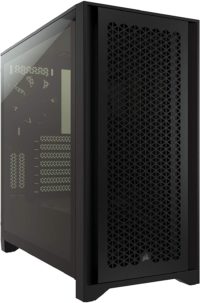
Type
Mid-tower
Motherboard Support
ATX, mATX, Mini-ITX
Dimensions
17.83 x 9.06 x 18.35 inches
Included Fans
2 x 120mm AirGuide fans
- Good airflow and mesh filtration
- Great quality and ease of build
- A more basic option for its price as RGB options more expensive
When it comes to an affordable mid-tower case, the Corsair 4000D is a great choice to look at. With great build quality, the case is built to last and keeps standing, no matter your build. Especially with Corsair’s ease of build. which means you’ll have no issue with the 4000D.
It also adds good airflow throughout, changing up the front panel with a mesh does improve what cooling is available to the insides. As such it stops the choking the other versions may offer. And with a clean aesthetic to it, there is a lot to look at, especially with the clean glass side panel to peer into the components. The back side is also spacious, with plenty of room for cables to fit in. And with great cable channels, cable management is easy and simple giving you a clean overall build.
Check out our full Corsair 4000D airflow review.
What to look for in a PC case?
When looking for the right PC case for you there are many considerations to think about. Starting from the size, you want to find the right form factor that will fit into the rest of your setup. Fitting it on your desk or even under it is important, but then you want to make sure the rest of your components work in it. A MATX case won’t fit a full-sized ATX motherboard, and may even limit the size of GPU you can fit in it.
Another thing is the design, you of course want a nice looking case that you enjoy having. No point regretting the thing you have to see every day so start off well. The design is also important for the cooling of your system, especially your GPU and CPU as they are important factors in keeping your performance up. A case suited for airflow and with good cooling is important to factor in for the long term.
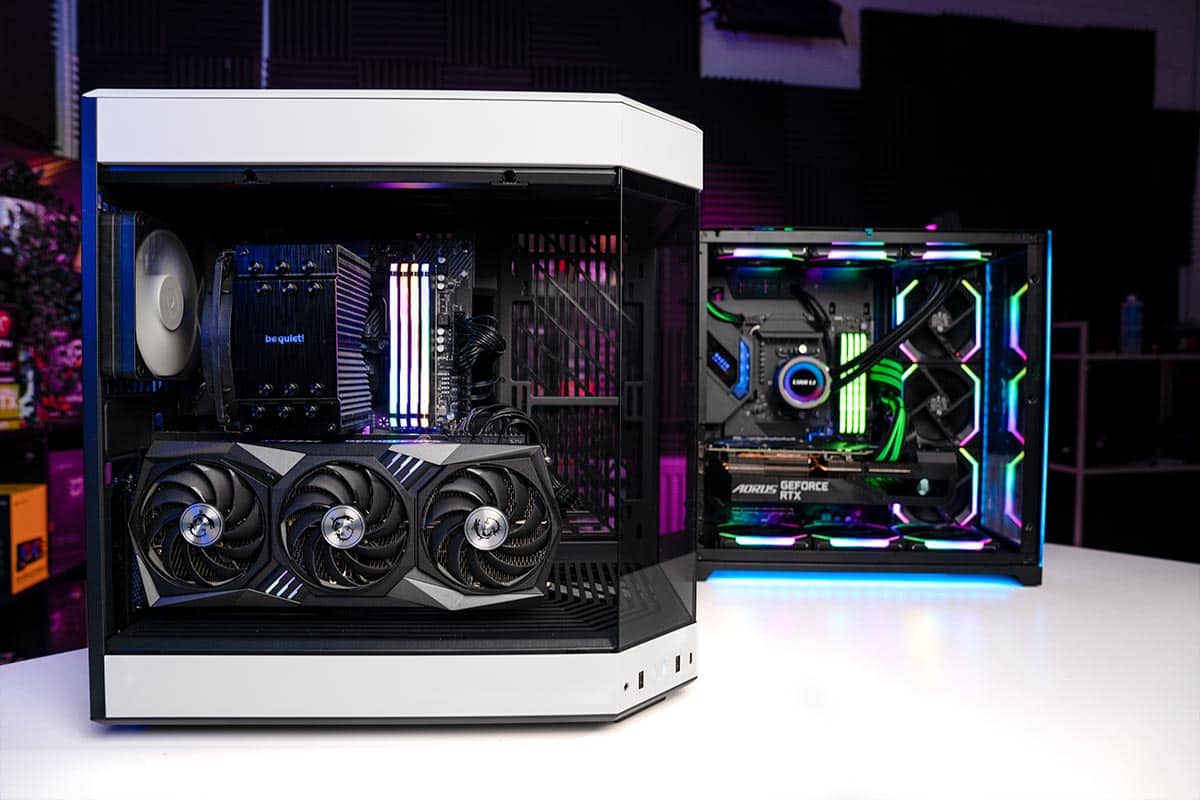
Can the PC case affect performance?
Yes indeed, as with any component in your PC, it can affect the performance. Depending on its build factor and how much airflow it has to provide, the more it allows the better cooling your components can get and won’t thermal throttle. That also depends on how many PC fans there are installed and if they can do their job properly as you want to make the most out of it. You may also consider RGB fans for the job but if they’re also restricted by the case they can limit you.
That’s also the case for your components and how much room they have. As if the like of your GPU is being squished up against the bottom of the case or a cover, it won’t get enough airflow for it and limit it. The CPU cooler may also be limited by size and what’s supported, like what AIO can fit in or how big of an air cooler can fit in.
Other useful pages
- Best MATX cases
- Best full tower PC cases
- Best open air PC cases
- Best PC cases under $100
- Best Mini ITX cases
Final word
Although often overlooked, the importance of a PC case cannot be overstated. Your case protects the rest of your components and provides them with airflow to ensure they’re running at a stable temperature, making it important to find the best PC cases available. Now you have everything you need to choose a good case no matter what your needs are, whether it’s airflow or for that water-cooled build.
FAQs
What sizes of PC cases are there?
PC cases range from large to small. You can find the likes of EATX, ATX, MicroATX, and Mini-ITX cases. These vary from large to small and are compatible with the decreasing size of motherboards.
Do I really need a PC case?
Technically you could get away with not having a PC case, but you’re asking for trouble if you don’t have one. There are open-air cases or you could build onto a cardboard box, but encasing your system in a case will protect it from the environment, stop it from getting as dusty, and stop anything from damaging the components. There are plenty of budget PCs that will get the job done if needed.

